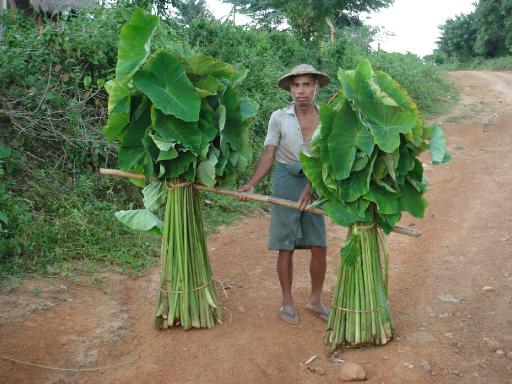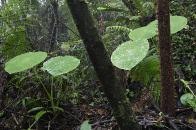
Recently Rated:
Stats
Work interests: Crop Wild Relatives (CWR), plant domestication, crop history, biodiversity, ethnobotany
Affiliation/website: National Museum of Ethnology, Osaka, Japan
Preferred contact method: Any
Preferred contact language(s): English, German
Contact: Dr Peter J. Matthews, Project Leader: pjm [at] minpaku [dot] ac [dot] jp
Favourite publications:
Category: Planning
Mapping Genetic Diversity in Taro to Test Domestication Theories (2017-2021)
By Research Cooperative, 2022-05-22
The "Mapping Genetic Diversity" was an international research project supported by the Japan Society for the Promotion of Science (JSPS Kakenhi No. 17H04614). Project period: 1st April 2017 - 31st March 2021.
Taro ( Colocasia esculenta ) is an ancient root and vegetable crop of temperate and tropical regions of Africa, Eurasia, and Oceania. In recent centuries it also reached the Americas. We are attempting to learn more about the natural and cultural history of this crop, in Southeast Asia and beyond.
The application for JSPS funding was submitted in October 2016, and accepted in April 2017. These were public funds administered through the National Museum of Ethnology, Japan, under the direction of the project leader, Dr Peter J. Matthews.
See Matthews profile and publications list at the Museum website.
Publications related to this project can be found here: Researchgate profile .
Further publications are planned and will be announced here when published.
Links to related publications by other project members can be added to the Project website, as time permits (e.g. on cultivated taro, or aroid taxonomy). A Wild Taro Working Group will also be developed here.

C. formosana , vic. Mt Polis, Philippines
(PJM, 22nd Nov. 2011)
Until the beginning of 2021, the Wild Taro Research Project was supported by a four-year JSPS grant (1st April 2017- 31st March 2020).
In 2021, Dr Matthews received support from a JSPS project led by Dr Rintaro Ono, and in 2022 he joined a project led by Dr Rintaro Ono at the National Museum of Ethnology, Japan: Maritime Asia and Oceania Studies. This project in turn is supported under the framework of a Networked Core Project for the Promotion of Global Area Studies, directed by the National Institutes for the Humanities (NIHU), Japan.
The funding made available through this collaboration is enough to support a part-time research assistant and analysis of samples collected during previous fieldwork. Our main focus will be a study of genetic diversity in the cultivated aroid Alocasia macrorrhizos and its near relatives (including to some extent Colocasia spp.).
Photo: Alocasia odora in regenerating forest, Ishigaki Island, Japan (PJM, February 2022)
Taro, Colocasia esculenta (L.) Schott, is a root crop and leaf vegetable found in tropical to temperate regions of Africa, Asia, Oceania, and the Americas.
Throughout lowland Southeast Asia, wild populations of C. esculenta grow along roadsides, ditches and canals, and on the banks of ponds, streams, and rivers (Fig. 1).

Figure 1 In N. Vietnam, C. menglaensis Yin, Li, & Xu (left), and C. lihengiae Long & Liu (centre) carry the same chloroplast genome as wild C. esculenta in a natural lowland swamp (right) but have species-specific, nuclear genome ITS sequences (Matthews, Ahmed & Nguyen, 2016 “Sympatry of Colocasia esculenta (taro) and its wild relatives in Southeast Asia” Paper presented at 8th World Archaeology Congress, Kyoto, 28. Aug.-2. Sept. 2016).
These rarely studied wild populations are widely used as free sources of food for local people and fodder for local pigs. They actively invade the open habitats created by human activities, spreading vegetatively and by seed, and may represent the most abundant wild vegetable source in Southeast Asia.
To test old and new domestication models (Fig. 2), we will:
(i) map the distribution of wild populations of C. esculenta ,
(ii) record their morphological diversity
(iii) collect leaf tissue samples for DNA analysis, and
(iv) compare the wild populations with cultivated C. esculenta and wild Colocasia species using DNA tests for past hybridization.

Figure 2 Domestication models: I. Old : linear process, one species (without hybridization). II. New : hybridization & introgression among multiple species, then spread to lowlands, use, selection, and domestication (= ‘floodplain weed theory’ of Smith, 1995, applied to C. esculenta ).
To conduct the research, convene related meetings, and prepare publications, we will establish an international “ Wild Taro Working Group ” composed of local counterparts and others with relevant expertise and interests.
